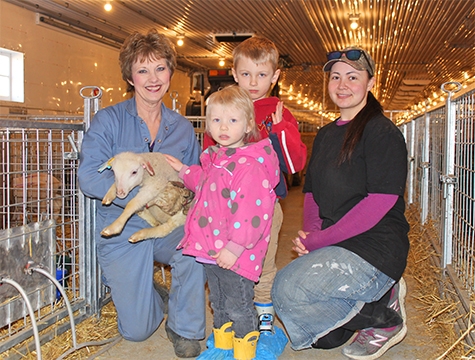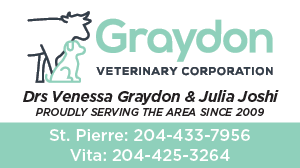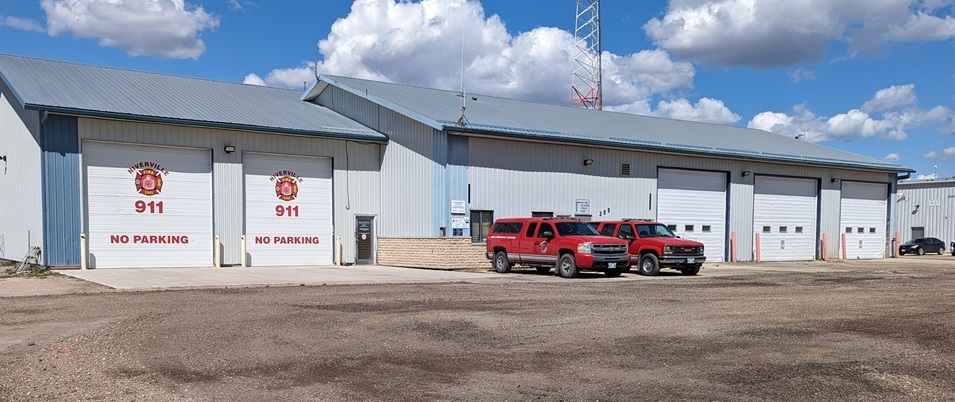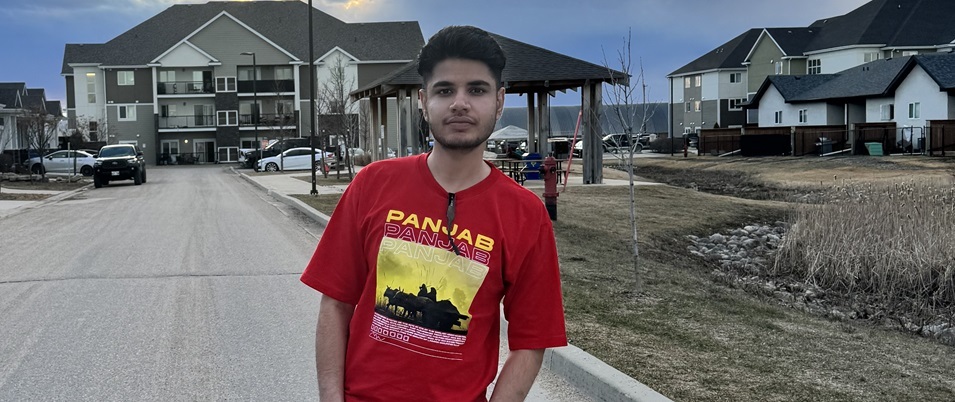
Dustin and Dallas Wiebe of Apex Farms believe that diversity is the key to the long-term sustainability of their small farming operation in southeast Manitoba. The brothers raise hogs on a farm near Niverville and are trying their hand at growing trout in one of their empty sheds. Recently, on a farm property south of Steinbach, the duo invested in another type of livestock: sheep.
Sheep farming isn’t altogether new to the pair. They began raising sheep on their property bordering Sixth Avenue South in Niverville back in 2001. A small flock was introduced to the farm to serve as lawnmowers, helping to cut back on property maintenance while providing a little meat for the families.
In 2012, during a time when hog producers were taking a crippling industry hit, the brothers purchased a 25,000-square-foot hog barn from Harry and Lorna Warkentin of Friedensfeld. Upon consultation with Manitoba Conservation, they concluded that retrofitting it for a sheep was a good option.
“Canada imports 60 percent of its lamb right now,” says Dustin. “Toronto is a big market because it’s a more ethnic region.”
The Wiebe brothers partnered with the Warkentins to manage the lambing operation and together they began the arduous task of researching the dynamics required to accommodate sheep production on a larger scale. In January 2018, the barn was finally ready. The Warkentins continue to provide the production management along with two employees.
Now, three months in, the flock is flourishing and already home to about 900 lambs that were birthed here. The team intends to build on their stock of ewes by retaining all the ewe lambs until they reach capacity.
The sheep barn is a multifaceted facility including sections for birthing, bonding, growing, and shearing. Breeding will take place outside in the summer and fall when rams are introduced to the ewes. In winter, the ewes wait out their five-month gestation period and give birth to one, two, or three lambs at a time.
The process begins in drop pens where the ewes give birth. These pens are monitored with surveillance cameras so that the Warkentins can keep watch over the new births twenty-four hours a day. There is a cot available in the barn for the nights when large amounts of ewes are lambing. This is necessary, Lorna says, so that they can be certain which lambs belong to which ewe.
“When there’s a bunch of ewes lambing, there’s a lot of mis-mothering that happens,” says Lorna.
Ewes who are still pregnant tend to steal the affections of others’ newborns, licking and bonding with them in an attempt at adoption. Other times new mothers reject their own newborns, preventing them from getting close enough to nurse.
Immediately after birth, the mother and baby are moved to jugs which are small claiming pens just large enough for the pair. Here they stay for two to three days to allow for complete bonding. Occasionally, when the mother stubbornly resists bonding, the baby is moved to the orphanage pen where it is fed formula through a state-of-the-art machine. The orphanage pen may also become home to the third-born of the many triplets, as an ewe is only able to nurse two babies at a time.
“It takes a lot of intensive management to make sure that lambs stay alive,” says Lorna. “If you don’t have facilities like this, then there’s a high mortality rate.”
Dustin estimates that there would be an approximate 35 percent infant death rate if they didn’t step in to care for the lambs that are orphaned.
“Before we had this facility we’d milk the mom, put it into a bottle, and take it home because the orphan lambs were in our bathtub to keep them warm and we fed them there,” says Dustin, musing over his family’s experiences on the Niverville farm.
He recounts times when his children bonded over the lambs coming in and out of the household, causing them to lose their appetite for the meat. After nurturing and feeding the little ones by hand, they understandably didn’t want to eat them.
After bonding in the barn is complete, mother and baby are moved to new pens that house 25 sheep at a time so that they can still find each other in the flock. As the lambs grow, they are moved to a larger final pen.
On an annual basis, the sheep are sheared and the wool is sold to the Canadian Co-operative Wool Growers Inc. The sale of the wool doesn’t even cover the cost of hiring someone to shear them, but the grooming process is necessary for the health and comfort of the animal.
Occasionally, a black sheep is born and this wool must be kept aside due to lack of demand for black wool.
A conveyor belt runs past the many sheep pens, delivering a mixture of barley, alfalfa, grass, and minerals. While sheep will eat virtually anything, this specific diet, formulated by an animal nutritionist, ensures a quality meat product.
“The way we feed the lambs multigrains, it turns the meat into something way tastier,” says Dustin. “We never used to eat lamb because it was all grass-fed and it has a wild taste to it. Now, the way we do it, it tastes way better. There are also health benefits associated with eating lamb. It is a high-quality source of protein containing Omega 3 to 6, vitamins and minerals essential for brain and heart function. In general, local grain-fed lamb have far superior taste than imported lamb, which is why many restaurants buy local.”
Once the ewes reach 100 to 110 pounds, half of them will be taken to market while the rest are kept back to grow the herd. The Wiebe and Warkentin team continue to seek out the best means to market their meat. Some have already been sold at the Grunthal Auction Mart. They are also working on connections out east.
“At Grunthal, what we’ve noticed is if you can establish yourself as someone that always brings quality-raised animals, the buyers know that and they start to pay you more,” Lorna says.
Dustin admits that there is a vast difference between raising hogs and sheep. In the hog industry, farmers work under contract to one of three primary producers and exporters. The producer provides feed to the farmer and pays them a stipend for housing and caring for the livestock.
“We’re finishing hogs for six cents a pound, and here we’re going to be selling lamb for $2.30 per pound,” he says.
“We’re thinking of converting all of our pig barns to sheep.”
And Dustin believes there’s still a place for the small-time farmer in a world of big agriculture. “People still have to eat. You are a part of a chain… you’re just at the bottom of the chain.”




















